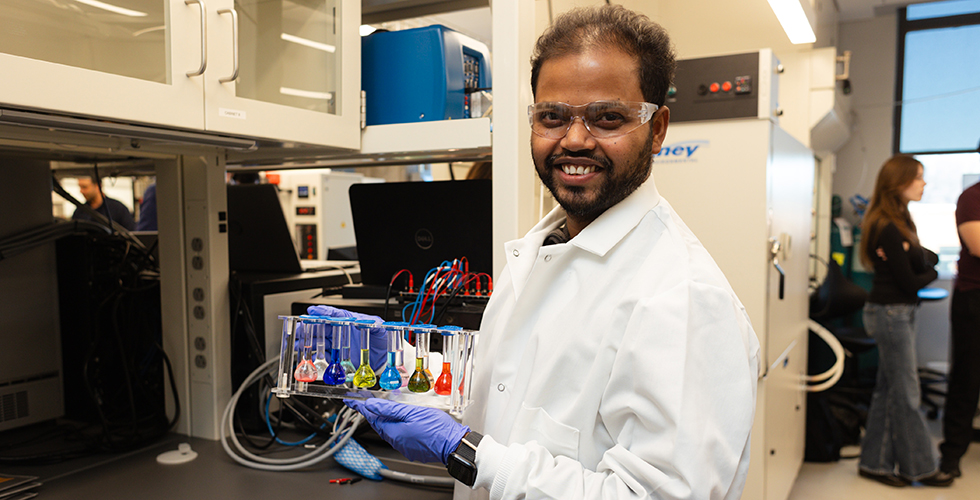Current Density Distribution
Real time 25 channel current density distribution with high temporal and spatial resolution.
Species Distribution
Real time species distribution with newly developed Agilent Real-Time Gas Analyzer (RTGA with 1 Hz data aquisition frequency) or Agilent 3000 Micro GC. Measurements include saturated water content and low ppm CO. RTGA can be used to solve mass balance for dynamic rate of liquid water generation/evaporation as a funciton of location in anode or cathode flow channels.
Temperature Distribution
Real time temperature distribution with fast-response, highly accurate embedded micro-sensors or next generation nano-thermopiles. We also have a FLIR A655sc thermal imaging camera to investigate temperature distribution and evolution in operating electrochemical systems.
Neutron Radiography
High temporal and spatial resolution visualization and quantification of two-phase flow. Gas evolution in RFBs has also been quantified.
Direct visualization of PEFCs
Quantify the liquid water dynamics in micro-channels of PEFCs for developing purging strategy as a function of operating conditions and fuel cell materials. Additionally, through-plane gas transport is quantified with a compact, efficient Loschmidt cell.
Distributed Real Time AC Impedance and High Frequency Resistance (HFR)
Measurements for MEA moisture content feedback, diffusion rates and electrochemical kinetic parameter determination as a function of location.
Thermal and Electrical Transport
Characterization of in-plane and through-plane parameters of highly anisotropic thick film electrolyte, GDL, catalyst layer, and bipolar plates with specialized test stands.
Diffusion Media Transport
Characterization of Diffusion Media (DM) flow bypass under realistic operating conditions in a user-configurable geometry. This test stand allows fundamental characterization of in-plane gas-phase transport in the DM.
Thermal Transport
Specialized constant temperature boundary condition test cell and embedded sensors enable calculation of equivalent thermal conductivity in the through-plane direction for PEFC as a function of operating parameters and compression.
Freeze-Thaw Visualization
Visualization and tracking/quantification of liquid/solid phase water at existing fuel cell laboratory of the PSU Neutron Imaging Center.
Controlled Freeze/Thaw Start-up
Newly developed distributed test cell at the EESC Lab allows controlled and truly constant boundary condition temperature for a 50 cm2 fuel cell, along with distributed current, species, temperature and HFR measurements. Temperature can be controlled to well below freezing or >110 C.
Online Carbon Monoxide Poison Sensor
The APL has developed an online, hardware-free CO sensor to accurately quantify CO poisoning to the ppm level. This enables a much more robust fuel cell system and eliminates expensive CO sensor hardware. The sensor is developed based on the dynamic system response to perturbation and utilized the tools of symbolic dynamics.
Incipient Failure and Degradation Sensor
The APL is developing online, in situ sensors to detect and quantify long-term failure modes (such as catalyst migration and degradation or pinhole formation) at an early stage so that mitigation strategies can be applied to prolong life. These sensors utilize tools of symbolic dynamics and the dynamic response of the fuel cell to external stimulus to rapidly quantify the long-term degradation level.
Comprehensive Design Algorithm
Based on benchmark data generated from our novel techniques, the EESC Lab is highly specialized at developing design algorithms for performance diagnostics, degradation sensing, comprehensive stack simulations for cold-start, shutdown and freeze/thaw mechanisms.
Construction of Custom MEAs
The EESC Lab is always looking to broaden horizons in terms of sensing, diagnostics, and quantification of relevant fuel cell phenomena. Please feel free to contact Dr. Mench directly if you are interested in partnering to develop additional technologies.
